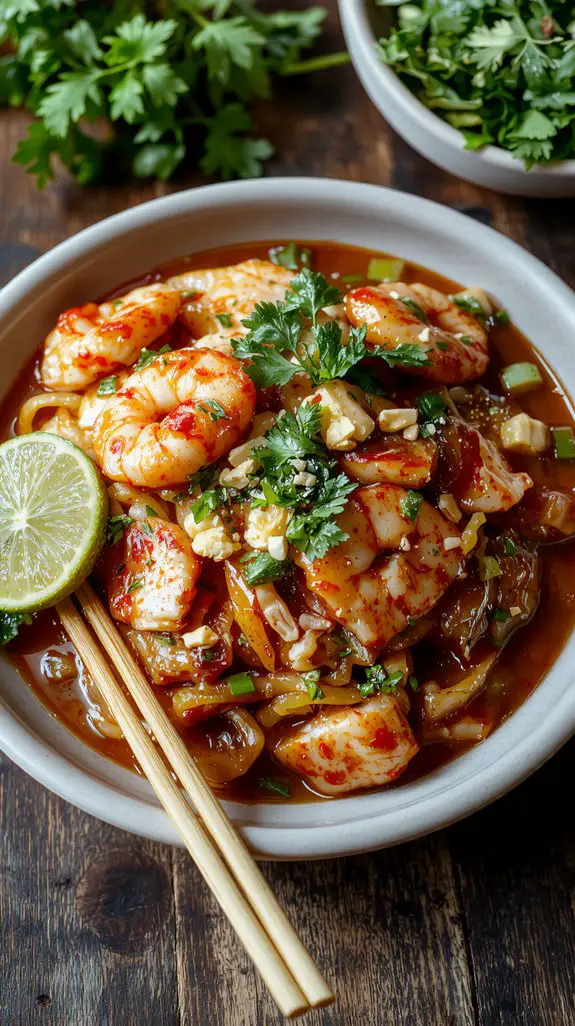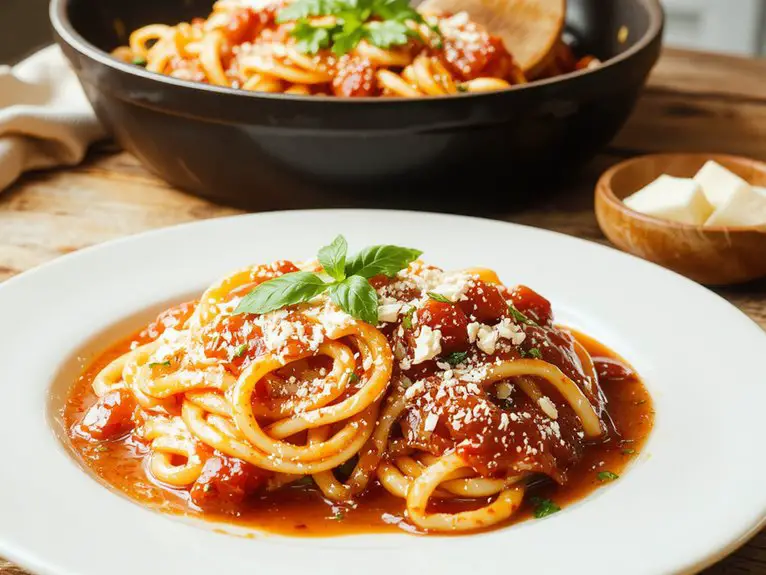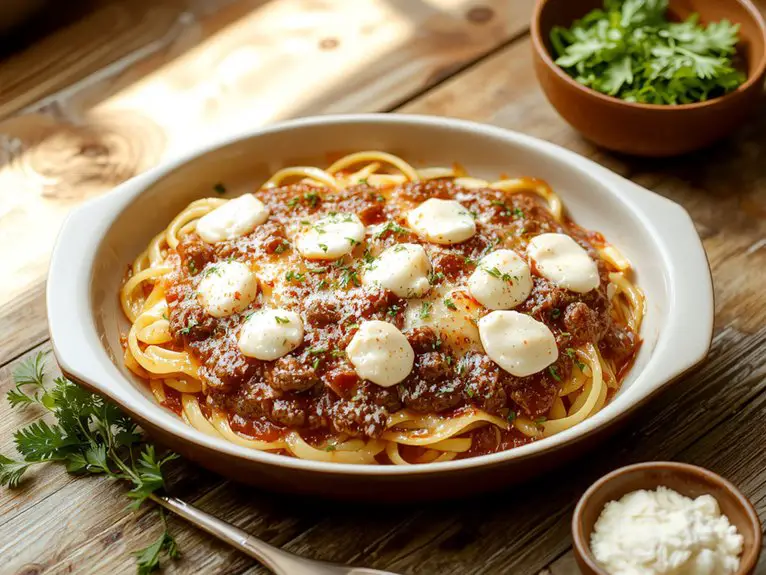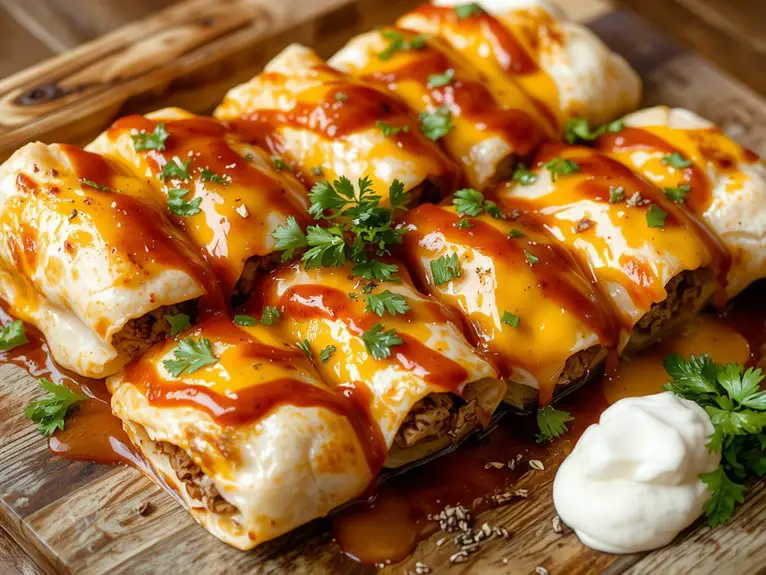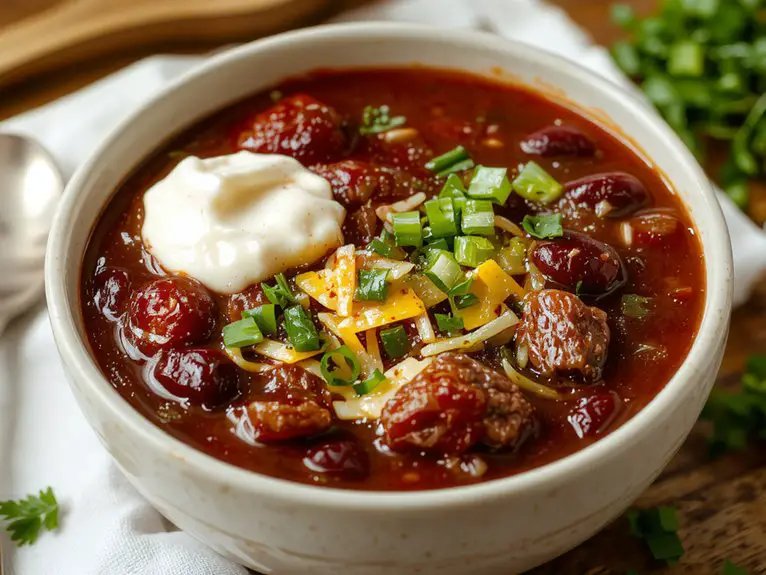Recipe
This Pad Thai recipe is the real deal—street-food-level deliciousness you can whip up in your own kitchen. I’ve perfected this version over countless trials, and I’m telling you, it’s a game-changer.
The secret? It’s all about that tamarind paste—tangy, rich, and packing the authentic flavor you crave—paired with perfectly chewy rice noodles.
Throw in crunchy bean sprouts, tender shrimp or tofu, and a sprinkle of peanuts, and you’ve got a dish that’s sweet, savory, and just a little smoky from the stir-fry heat.
Trust me, one bite and you’ll feel like you’re sitting at a bustling Bangkok food stall. Plus, it’s easier to make than you think—no fancy techniques required. Let’s get cooking!
Ingredients
Pad Thai is all about balancing sweet, salty, tangy, and umami flavors, and the right ingredients are key to nailing that perfect harmony. While some components are flexible, a few are non-negotiable for that authentic taste. Here’s what you’ll need to create restaurant-quality Pad Thai at home:
For the Sauce:
- Fish sauce – The soul of Pad Thai, offering that signature salty umami punch. *Pro Tip: Use a high-quality brand like Red Boat for the best flavor.*
- Tamarind paste – Adds a tangy depth that defines the dish. *No tamarind? Substitute with lime juice mixed with brown sugar in a pinch, but it won’t be quite the same.*
- Palm sugar – Balances the sauce with its caramel-like sweetness. *No palm sugar? Brown sugar works as a substitute.*
- Soy sauce – Enhances the savory notes. Opt for light soy sauce for a milder flavor.
For the Noodles:
- Rice noodles (Pad Thai noodles) – Flat, wide rice noodles are essential. *Pro Tip: Soak them in warm water until pliable but not mushy—they’ll finish cooking in the wok.*
- Vegetable oil – Prevents sticking and adds a glossy finish to the dish.
Proteins & Veggies:
- Eggs – Adds richness and binds the dish together. *Pro Tip: Scramble them first, then mix them into the noodles.*
- Shrimp, chicken, or tofu – Choose your protein. *Pro Tip: For tofu, press it to remove excess moisture and pan-fry for a crispy texture.*
- Bean sprouts – Adds crunch and freshness. *Pro Tip: Add half during cooking and reserve the rest for garnish.*
- Garlic – Aromatic base for flavor. *Pro Tip: Minced finely for even distribution.*
Garnishes & Extras:
- Roasted peanuts – Crushed and sprinkled on top for nutty crunch. *Pro Tip: Toast them lightly for extra flavor.*
- Lime wedges – Squeezed fresh over the dish for a tangy finish.
- Fresh cilantro – Adds a pop of herbaceous brightness.
- Chili flakes or fresh chilies – Optional for a spicy kick.
- Green onions – Sliced thinly for garnish and mild onion flavor.
*Little Win: A pinch of sugar and chili flakes on the side lets guests customize their plate to their taste.*
How to Make the Best Authentic Pad Thai Secrets
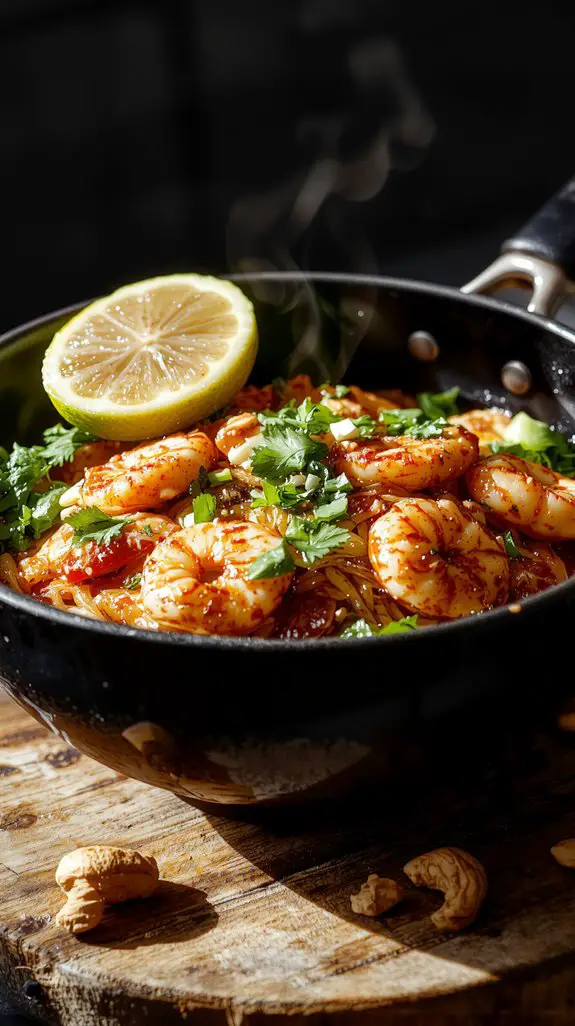
- Sauté aromatics: Add minced garlic and shallots to the wok and stir-fry until fragrant, about 30 seconds. Push them to one side to make room for the eggs.
- Scramble the eggs: Crack the eggs into the wok and scramble lightly, then mix them with the aromatics.
*Visual Cue:* Eggs should be just set and slightly fluffy, not overcooked.
– Combine noodles and sauce: Add the soaked noodles to the wok, followed by the sauce.
Toss everything together until the noodles are evenly coated and heated through.
*Pro Tip:* Use tongs or two spatulas to gently toss—don’t stir too aggressively.
– Add protein and vegetables: Return the cooked protein to the wok, along with bean sprouts and green onions.
Toss gently to combine.
*Flexibility:* Add more vegetables like bell peppers or zucchini if desired.
– Finish with garnishes: Transfer the Pad Thai to plates and top with crushed peanuts, fresh cilantro, and a lime wedge.
Serve immediately.
*Why it matters:* The garnishes add texture and brightness to complete the dish.
Nutrition
Pad Thai is a balanced dish with a mix of protein, carbs, and fats. Here’s the nutritional breakdown per serving.
| Nutrient | Amount per Serving |
|---|---|
| Calories | 450 kcal |
| Protein | 18 g |
| Carbohydrates | 60 g |
| Fat | 15 g |
| Fiber | 3 g |
| Sugar | 12 g |
| Sodium | 800 mg |
Chef Tips
Since mastering the technique is key, I’ll share a few tips to guarantee your Pad Thai turns out perfectly.
Soak rice noodles until pliable but not soft. Use high heat for quick cooking and avoid soggy noodles.
Balance sweet, sour, salty, and spicy flavors precisely. Don’t overcook the eggs—keep them slightly runny.
Garnish with lime, peanuts, and fresh herbs for added brightness and crunch.
Frequently Asked Questions
What Is the Origin of Pad Thai?
Pad Thai originated in Thailand during the 1930s, when the government promoted it to boost national identity. I’ve learned it combines Chinese stir-fry techniques with Thai flavors, creating a dish that’s now iconic worldwide.
Can I Make Pad Thai Gluten-Free?
Yes, I can make pad thai gluten-free by swapping regular soy sauce for tamari or coconut aminos and ensuring the rice noodles are gluten-free. I’ll also double-check any sauces or toppings to avoid gluten-containing ingredients.
What’s the Best Substitute for Tamarind Paste?
I’d use lime juice with brown sugar—it’s my go-to. Mix 2 tbsp lime juice and 1 tbsp sugar for every 1 tbsp tamarind paste. It’s not exact, but it gives that sweet-tangy balance I love.
How Do I Store Leftover Pad Thai?
I’d store leftover Pad Thai in an airtight container in the fridge for up to three days. If I want it longer, I’d freeze it for about a month, reheating it in a pan to keep the texture right.
Can I Use a Wok Instead of a Skillet?
I can definitely use a wok instead of a skillet. It’s perfect for high-heat cooking and tossing ingredients evenly. Just make sure I preheat it well and adjust the heat as needed to avoid burning the noodles.

